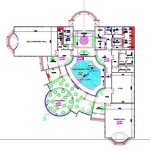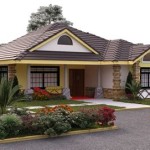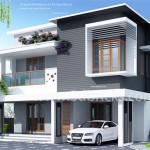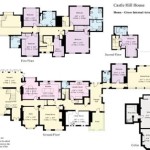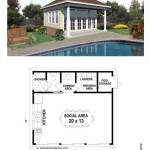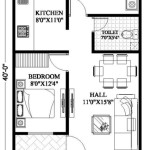Rastra Block House Plans: A Comprehensive Guide
Rastra blocks, also known as Insulated Concrete Forms (ICFs), present a unique and increasingly popular approach to building construction. These composite blocks, typically made from recycled polystyrene and cement, offer a variety of advantages over traditional building materials like concrete or wood framing. When considering rastra block construction, understanding the nuances of house plan development is crucial.
Rastra block house plans differ from conventional plans in several key aspects. Wall thickness is a primary consideration. Rastra blocks create thicker walls than traditional framing, impacting the overall square footage and layout of a home. This difference requires careful planning to maximize usable space and ensure the desired floor plan is achieved within the building envelope.
The inherent strength and insulating properties of rastra blocks also influence the design process. These blocks provide exceptional structural integrity, allowing for larger open spans and fewer interior load-bearing walls. This flexibility opens up numerous design possibilities, enabling architects and homeowners to create more spacious and open floor plans.
The thermal mass of rastra blocks plays a significant role in energy efficiency. These blocks effectively regulate indoor temperatures by absorbing and releasing heat slowly. This characteristic contributes to lower heating and cooling costs and creates a more comfortable living environment. House plans must be designed to optimize this thermal mass, considering factors like window placement, insulation, and ventilation.
Incorporating utilities and services within rastra block walls requires specific planning. Electrical conduits, plumbing pipes, and HVAC ductwork need to be strategically placed during construction. Rastra block house plans must detail these placements to avoid costly modifications once the walls are erected. Careful coordination between the architect, engineer, and contractor is essential.
Designing with rastra blocks requires specialized knowledge and experience. Understanding the material's properties and limitations is crucial for creating structurally sound and efficient homes. Architects specializing in rastra block construction can provide valuable insights and guidance throughout the design process, ensuring the plans are optimized for the material's unique characteristics.
The design process for rastra block homes typically begins with a thorough site analysis. Considerations such as topography, soil conditions, and local climate influence the design and orientation of the house. These factors play a critical role in determining the optimal placement of windows, doors, and other openings to maximize energy efficiency and natural light.
Once the site analysis is complete, the next step involves developing preliminary design concepts. These concepts outline the overall layout, size, and style of the house. Clients work closely with the architect to refine these concepts, ensuring the design meets their specific needs and preferences. 3D modeling and visualization tools can be employed to provide a realistic representation of the finished product.
After the preliminary design is finalized, the architect develops detailed construction drawings. These drawings provide specific information on wall assembly, foundation details, roof design, and other structural elements. Precise measurements and specifications ensure the construction process proceeds smoothly and the final product adheres to the design intent.
Integrating sustainable design principles into rastra block house plans is becoming increasingly common. The use of recycled materials in the blocks themselves contributes to their environmental friendliness. Furthermore, the energy efficiency achieved through thermal mass reduces the overall carbon footprint of the home. Incorporating features like rainwater harvesting systems and solar panels can further enhance sustainability.
Choosing the right foundation for a rastra block home is crucial for long-term stability and performance. Factors such as soil type, load-bearing capacity, and local building codes influence the foundation design. Common foundation types include slab-on-grade, basement, and crawlspace foundations. Each type offers different advantages and disadvantages in terms of cost, construction complexity, and accessibility.
Roof design also plays a significant role in the overall performance of a rastra block home. Properly designed roofs provide protection from the elements while contributing to energy efficiency. Roof overhangs, for example, can help to shade windows and reduce heat gain during summer months. The selection of roofing materials, such as metal, tile, or shingles, also impacts energy performance and aesthetics.
Careful consideration of landscaping can further enhance the energy efficiency and aesthetic appeal of a rastra block home. Strategically placed trees and shrubs can provide shade during the summer and act as windbreaks during the winter. Proper grading and drainage can help to prevent moisture buildup around the foundation, protecting the integrity of the structure.
Rastra block construction offers a compelling alternative to traditional building methods. The combination of strength, insulation, and design flexibility makes rastra blocks an attractive option for a wide range of residential projects. By carefully considering the factors outlined above, homeowners and architects can create durable, energy-efficient, and aesthetically pleasing homes that meet their specific needs and preferences.

Icf Blocks Insulated Concrete Forms Compound Rastra

Icf Blocks Insulated Concrete Forms Compound Rastra

Icf Blocks Insulated Concrete Forms Compound Rastra

Icf Blocks Insulated Concrete Forms Compound Rastra

Icf Blocks Insulated Concrete Forms Compound Rastra

Rastra Block Waiting To Be Filled With Concrete Sydney Opera House Building

Laying The Rastra Blocks Home Pictures Concrete Footings Outdoor Furniture Sets

Icf Blocks Insulated Concrete Forms Compound Rastra

Mcnell Ojai New Construction Rastra Block Mediterranean Exterior Santa Barbara By Otis Bradley Company Inc Houzz

Icf Blocks Insulated Concrete Forms Compound Rastra

